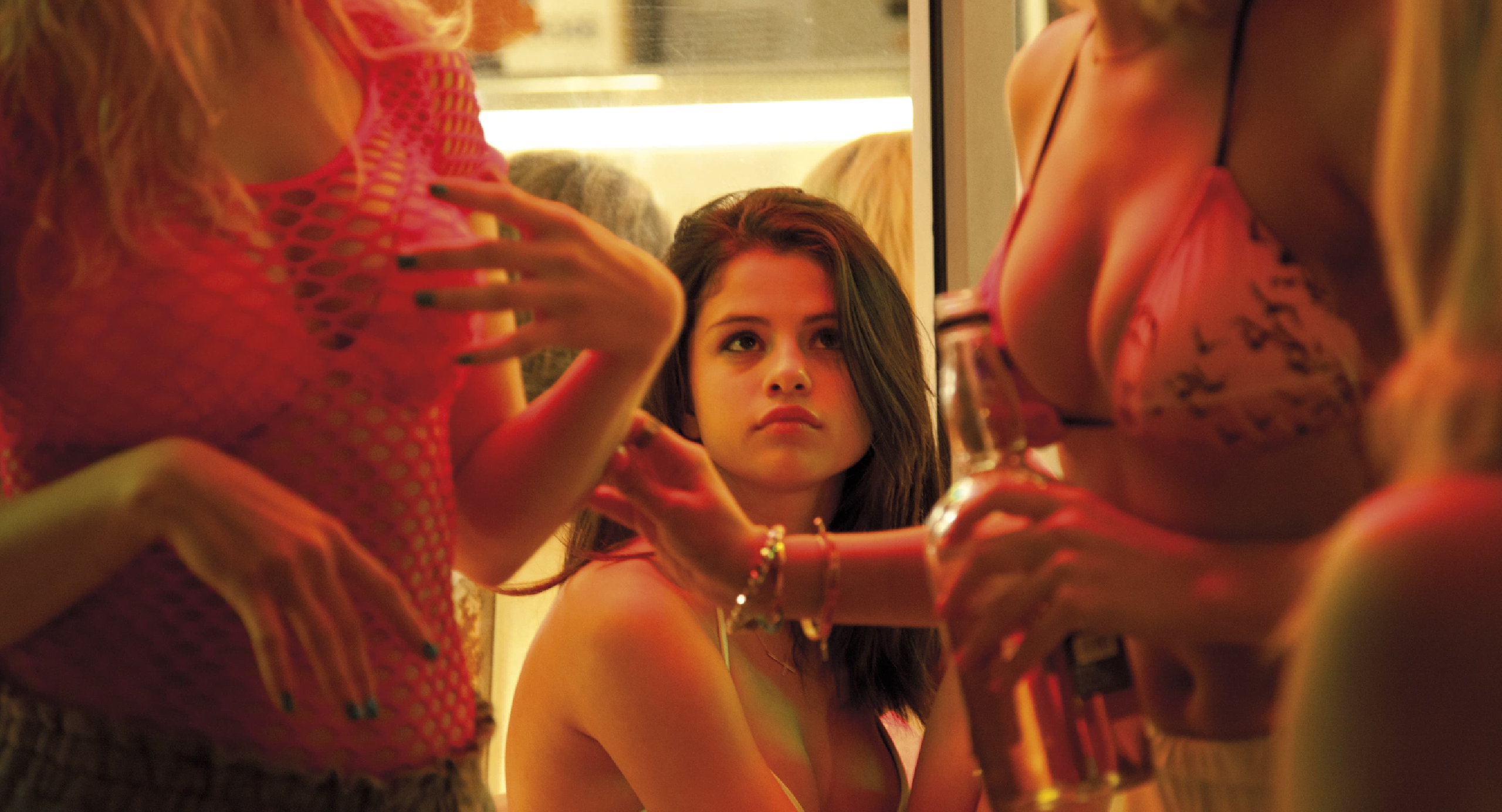Spring Breakers – Film Review
Published July 22, 2024

Harmony Korine‘s Spring Breakers is a film that aims to be a cultural critique and a visual spectacle, yet it stumbles in both areas, resulting in a muddled and superficial experience. Despite its provocative premise and striking visual style, the film ultimately falls short, leaving the audience with little more than a hollow echo of what could have been a profound commentary on youth and hedonism.
The story follows four college students—Faith (Selena Gomez), Brit (Ashley Benson), Candy (Vanessa Hudgens), and Cotty (Rachel Korine)—who are desperate to escape their mundane lives and experience the ultimate spring break adventure. After robbing a diner to fund their trip, they head to Florida, where their reckless behavior leads to their arrest. Enter Alien (James Franco), a flamboyant drug dealer and rapper who bails them out and introduces them to a world of crime and excess. As the girls get deeper into Alien’s lifestyle, their moral boundaries blur, leading to a climax that is as predictable as it is unsatisfying.
Korine’s directorial style is undeniably distinctive, with a penchant for vibrant colors, dynamic camerawork, and a disjointed narrative structure. The film’s neon-soaked aesthetic and use of repetitive, almost hypnotic sequences aim to create a dreamlike atmosphere. While this approach is visually striking, it often feels more like a distraction than an enhancement to the story. The fragmented editing, filled with flashbacks and foreshadowing, attempts to add depth but instead confuses the narrative, making it difficult for the audience to engage with the characters or the plot.
James Franco’s portrayal of Alien is one of the few highlights of the film. He fully commits to the role, delivering a performance that is both outlandish and charismatic. His scenes are some of the most memorable, providing a glimpse of the potential the film had to explore deeper character studies. However, Franco’s efforts are not enough to save the film from its own shortcomings.
The performances of the four female leads are less impressive. Selena Gomez’s Faith is the most grounded of the group, but her limited screen time and underdeveloped character prevent her from making a significant impact. Vanessa Hudgens, Ashley Benson, and Rachel Korine embody their roles with a certain level of enthusiasm, but their characters are so one-dimensional that their performances feel more like caricatures than real people. The script fails to give them the depth needed to transcend their superficial portrayals.
Spring Breakers attempts to tackle themes of youth, freedom, and the American dream, juxtaposed with the dark underbelly of hedonism and criminality. The film aspires to critique the culture of excess and the pursuit of instant gratification that is often associated with the spring break phenomenon. However, these themes are handled with such heavy-handedness and lack of nuance that they come across as shallow and unconvincing.
Korine’s commentary on the vacuous nature of contemporary youth culture is undermined by his own indulgence in the very excesses he seeks to criticize. The film’s relentless focus on partying, drug use, and sexual exploitation feels exploitative rather than critical, leaving the audience questioning whether the film is a satire or merely reveling in the debauchery it depicts.
The script is another significant weak point. Dialogue is sparse and often repetitive, with characters frequently uttering the same lines as if to hammer home a point that was already clear. This repetitive nature extends to the film’s structure, where scenes of partying and violence are interspersed with voiceovers that add little to the narrative. The lack of meaningful dialogue and character development leaves the film feeling empty, with little to engage the audience on an intellectual or emotional level.
At just over ninety minutes, Spring Breakers feels longer than it is, largely due to its erratic pacing. The first half of the film, focused on the girls’ journey to Florida and their initial encounters with Alien, drags on with little progression. The second half, where the girls become more entrenched in Alien’s world, picks up slightly but is marred by a series of increasingly implausible and poorly executed plot twists.
“Spring Breakers” is a film that promises much but delivers little. Harmony Korine’s vision is clear in its aesthetic but muddled in its execution, resulting in a film that is more style than substance. The lack of character development, coupled with a superficial script and erratic pacing, makes for a frustrating viewing experience.
In the end, Spring Breakers is a neon-soaked misfire, a film that aspires to be a cultural critique but instead becomes a victim of its own excesses.
